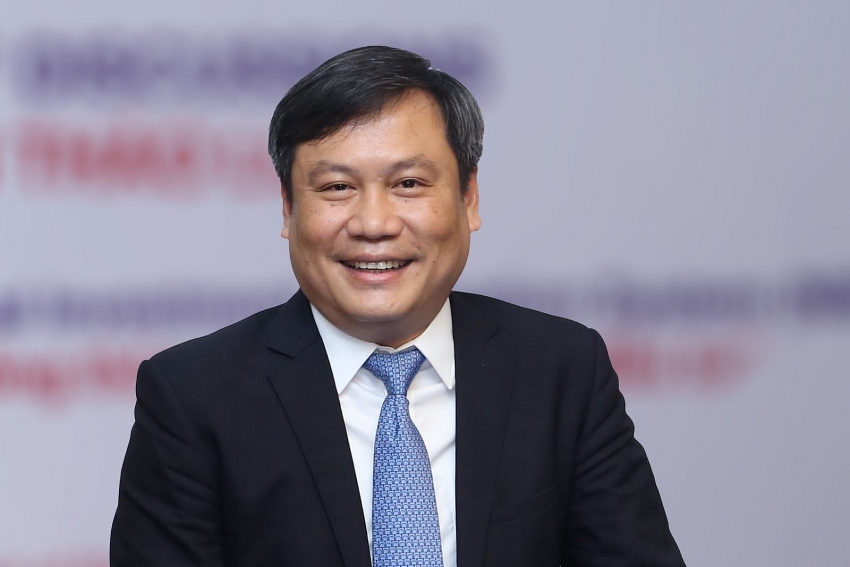Changes needed in FDI attraction orientations in 4.0 era
 |
| Deputy Minister Vu Dai Thang |
The national conference to summarise 30 years of foreign direct investment attraction will take place on October 4. How would you assess the role of FDI in national development during the past three decades?
FDI in Vietnam has been robust since the Law on Foreign Investment came into force in 1987. Over the years, this capital flow has become an integral part of the Vietnamese economy.
As of now, Vietnam has courted more than $320 billion in total FDI, more than $180 billion of which has been disbursed, making practical contributions to the national socioeconomic development cause.
The effects of FDI could be felt far and wide across Vietnam, depending on each development period. In the initial period when Vietnam was in dire need of investment capital, market expansion, as well as science and technology know-how, FDI flows helped enormously to meet these demands.
Lately, after the Vietnamese economy has undergone thorough changes and began functioning under market rules, FDI continued to play a crucial role as an important capital channel to complement Vietnam’s still limited investment sources.
In the field of science and technology, we have begun to gradually restrict FDI projects using backward technologies and encourage those employing state-of-the art technologies.
Beside all the positives, FDI also brought concerns, such as those related to science and technology, and environmental issues. How do you see these dangers?
These concerns are faced by every business, not only foreign-invested projects. Most foreign companies doing business in Vietnam are serious about following environmental regulations, and only part of them break the rules.
To deal with environmental issues, it is important to step up propagation and management measures to ensure businesses obey environmental regulations – foreign and local firms alike.
Regarding technology transfer, that is one of our limitations over the course of 30 years FDI attraction and management. In fact, foreign invested businesses have conducted technology transfer to their joint ventures or affiliates, but it proves extremely hard for local firms to directly access their technologies, particularly advanced ones.
How do you think Vietnam can bolster the efficiency of FDI attraction in the coming time?
Based on the experiences drawn during the past 30 years of FDI attraction and management, we have outlined concrete orientations and targets, matching the government’s master plan on mobilising diverse resources to enhance national economic development.
| It is certain that we will not attract FDI by all means, but it will be conducted on a smart way as well as on a selective basis serving development needs. |
It is certain that we will not attract FDI by all means, but will be smarter, more selective about it, taking into account Vietnam’s development needs and looking for the best fits.
In the initial stage, the top factors in FDI attraction were capital, technology, and market expansion. Now, in my view, the focus of FDI attraction needs to be on technology and market expansion, rather than capital. The strategy on FDI attraction in the years to come should also follow this direction.
How can we enhance linkages between local and foreign firms?
Fostering linkages between local and foreign firms has been one of our top priorities since we received the first FDI flows. These linkages, however, are still far below our expectations, even after three decades.
When foreign-invested enterprises (FIEs) started arriving to Vietnam, they brought with them satellite businesses. Local firms still cannot fill in the shoes of these satellite businesses and replace them in the FIEs’ supply chains. There are a multitude of reasons behind this, not last of which are local firms’ weak capacity and limited finances. However, I believe local firms will gradually grow more mature, then enhanced linkages with firms will come naturally.
I want to cite the example of a local firm that has the capacity to manufacture cars on globally competitive standards. Many foreign satellite businesses have come to learn about the possibility of supplying parts and devices to that local firm. From there, it is apparent that when the business potential is changing, the way to approach FDI capital flow needs to have differences also.
In addition, as the Fourth Industrial Revolution is taking the world by storm, the orientations to attract FDI flows will be definitely different from previous ones.
What the stars mean:
★ Poor ★ ★ Promising ★★★ Good ★★★★ Very good ★★★★★ Exceptional
Related Contents
Latest News
More News
- Industrial sector posts robust gains as year-end demand rises (December 09, 2025 | 13:38)
- ASEAN economies move up the global chip value chain (December 09, 2025 | 13:32)
- Reforms urged to unleash private-sector power (December 07, 2025 | 09:00)
- Foreign-invested enterprises export $295.6 billion in January-October (December 06, 2025 | 11:43)
- Bespoke policies to fast-track key developments in Hanoi (December 06, 2025 | 11:40)
- Vietnam targets higher value chains as global production reshapes (December 05, 2025 | 13:54)
- Hanoi and Mekong Delta set for major boost as new infrastructure projects break ground (December 05, 2025 | 13:42)
- Vietnam and Laos commit to joint industrial development and research (December 03, 2025 | 19:08)
- Vietnam Expo 2025: a strategic move for Hong Kong into Southeast Asia’s rising star (December 03, 2025 | 18:50)
- Vietnam sets pace for dual transition in industry and trade (December 03, 2025 | 14:12)

 Tag:
Tag:



























 Mobile Version
Mobile Version